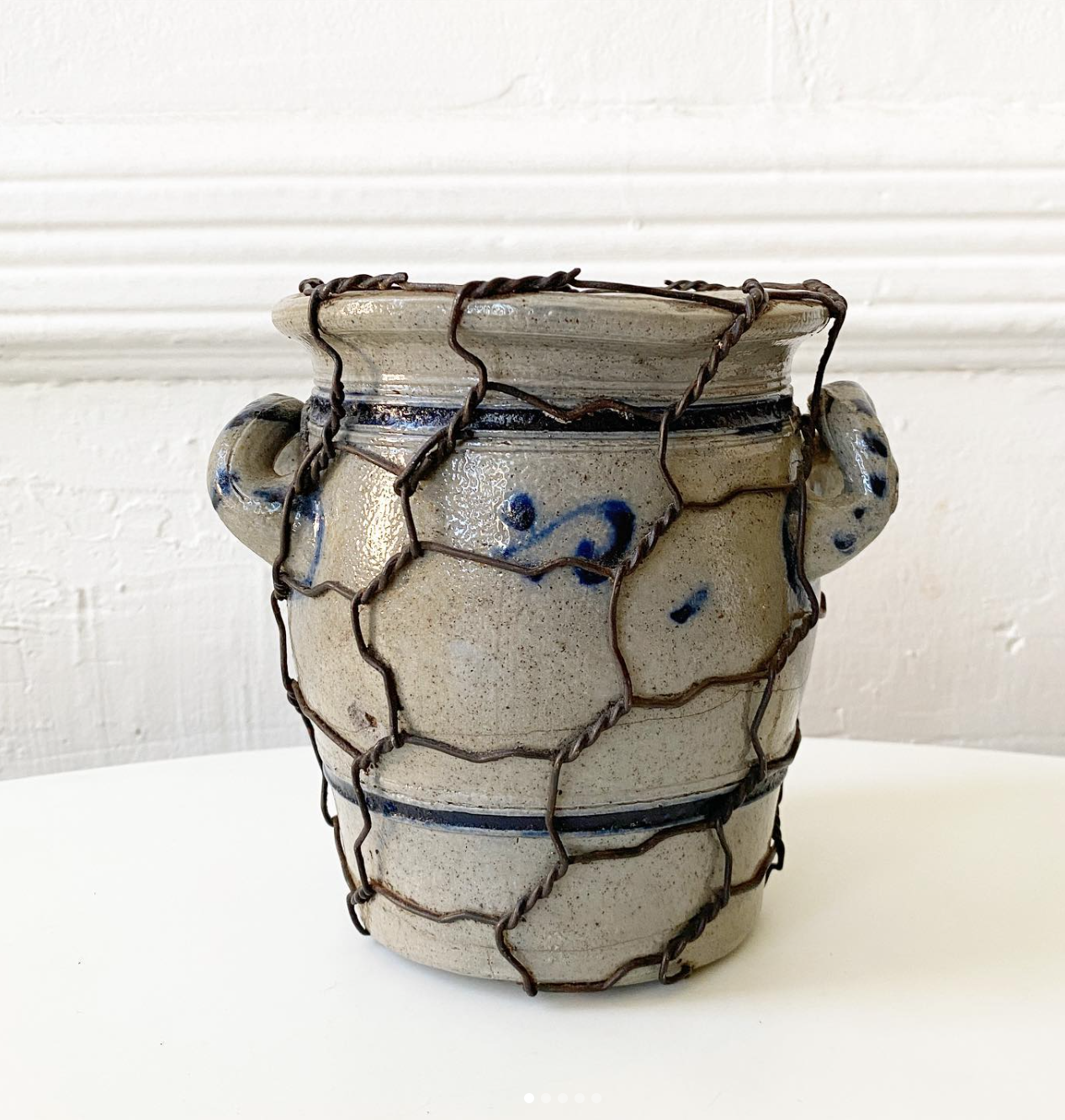Touhghts About Tihngs
Cat Love
→BFA FURN 2023
There is something to be said for a master curator. Oglander’s eye is so discerning, his documentation so seductive, that one gets the sense that you could run anything through the tihngs machine and it would be worth something. For example: this brick, stepped on by cats, sold for $280 in September of 2022.

Some of the items sold at tihngs would be considered art in the traditional sense (there are oil paintings), but most would not. Tools, repaired homegoods, children’s letters, personal photographs, unique clothing, and mysterious machines make up the majority of what’s on display. These are utilitarian objects, the things of people’s lives, markers of passion, eccentricity, and inventiveness, or else forgotten artifacts from the daily life of a time long past. Oglander, in an interview with New York magazine, describes them as “anonymous objects,” culled from estate sales and antique fairs.
The fact that the original makers and owners of most of the objects are unknown, anonymous, is of benefit to Oglander. His name is often the one most recently attached to what he’s selling. In place of the artist, he becomes the visionary, the person with the eye for beauty in the ordinary. In Allan Kaprow’s essay “The Legacy of Jackson Pollock,” he speaks of the “new art” Pollock ushered in. This new art uses “objects of every sort” in order to “show us, as if for the first time, the world we have always had about us but ignored.” Oglander’s work with tihngs does this, too. By Kaprow’s definition, he is certainly a maker of the new art.
An essential fact of tihngs is that it was born out of Instagram, a platform designed to turn everybody into peddlers of their own taste via image. Even if Oglander wasn’t selling things, the project is inherently commodified. The Instagram image as an artform allows us to claim what we see, what we find in the world, as our own, instantaneously. The things of tihngs are celebrated, via likes or dollars, because tihngs functions as a brand, a marker of quality. Oglander is selling the authentic folk genius of his “anonymous objects” by using his name and positioning as the artist. The implicit messaging of this scheme is that not everyone can actually be an artist. The original makers of the objects certainly aren’t. Their genius had to be found out by a member of the artistic vanguard—somebody with cultural capital and an audience.
Kaprow writes that new artists “will discover out of ordinary things the meaning of ordinariness. They will not try to make them extraordinary but will only state their real meaning.” An obsession with Real Meaning is pervasive in the internet era, where more and more, life can feel like a performance, real only if there is an audience and/or if there are qualitative markers of success. The resurgent interest in folk art by the institutional art world over the past decade speaks to this obsession. The incredible allure of the mirage of the “pure artist” is that we have it in us to make not for money or clout, but simply because the human spirit is alive and well and needs to sing.
Therein lies the central contradiction of tihngs, where the art is in showcasing and commodifying the “pure art.” This represents such a fascinating corner of the contemporary art world because it so thoroughly embodies many of the tensions and contradictions that exist in artmaking under capitalism. Can we illuminate ordinary-extraordinary art without selling it? Kaprow writes that “all of life will be open” to the new artists, which might be true, but if the title of “artist” is still gatekept by capital and prestige, there is no liberation to be found there for the rest of us.
And yet, when we lose faith, we gaze at the myth of the pure artist as a way of affirming that we all can access and channel the Real Meaning in our lives. I am domestically oriented—rearranging my furniture makes me feel like all of life is open to me. So does engraving my name on a new chisel or using a big leaf and copper wire as gift wrapping paper. There are certain artifacts of my life that are not about making work that nonetheless feel like the most precise indexical form of my creative selfhood. When I look at some tihngs things, like this broken stoneware crock repaired with wire, I can sense the spirit of a similar satisfaction—one that exists without the need for exaltation or commendation. The gift art gives us is freedom. We can touch, shape, and uplift the beauty and strangeness of the world every single day. How do we get here? How do we teach this?

Cat Love is sitting in the morning at the diner on the corner.